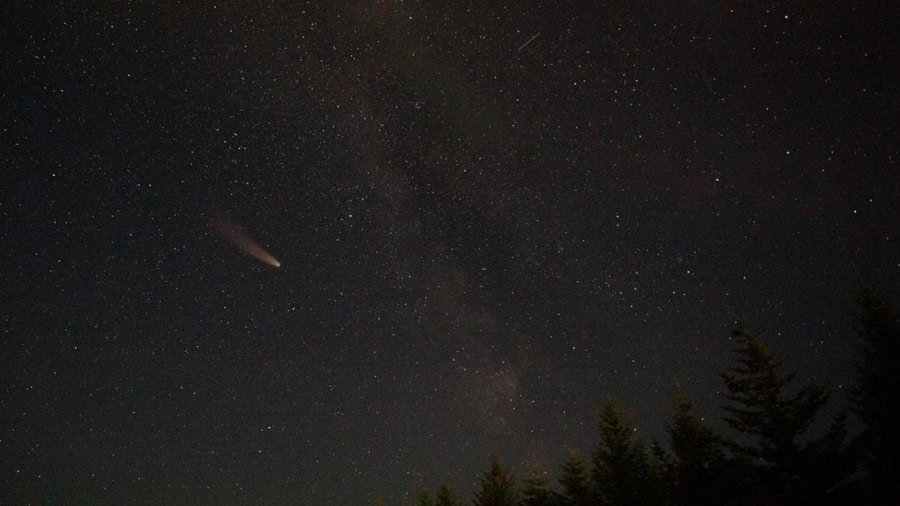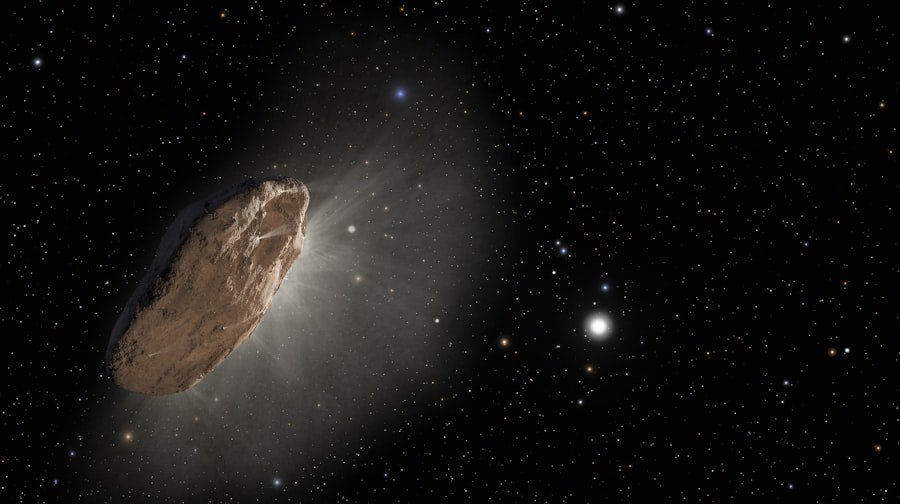The cosmos is a vast expanse filled with celestial bodies, among which asteroids pose a significant threat to Earth. These remnants from the early solar system, primarily found in the asteroid belt between Mars and Jupiter, can vary dramatically in size, composition, and trajectory. While many asteroids are small and harmless, others can be large enough to cause catastrophic damage upon impact.
Historical events, such as the Chicxulub impact that contributed to the extinction of the dinosaurs approximately 66 million years ago, underscore the potential dangers posed by these space rocks. As our understanding of the universe expands, so does our awareness of the risks associated with near-Earth objects (NEOs). The increasing frequency of asteroid discoveries has prompted scientists and researchers to prioritize planetary defense strategies.
The potential for an asteroid impact raises critical questions about how humanity can detect, track, and mitigate such threats. With advancements in technology and a growing body of research, the need for effective predictive models has never been more pressing. This is where artificial intelligence (AI) comes into play, offering innovative solutions to enhance our capabilities in monitoring and responding to asteroid threats.
Key Takeaways
- Asteroids pose a potential threat to Earth and it is important to understand the potential impact and how to predict and prevent them.
- AI, or artificial intelligence, is a powerful tool with a wide range of applications, including predicting asteroid trajectories and potential impacts.
- Predicting asteroid trajectories is crucial for early warning and planning potential deflection strategies to protect Earth from potential impacts.
- AI is used in predicting asteroid trajectories by analyzing vast amounts of data and identifying patterns to make accurate predictions.
- While AI offers advantages such as speed and accuracy in predicting asteroid trajectories, it also has limitations such as the need for continuous updates and potential errors in data analysis.
Understanding AI and its Applications
Applications of AI
The applications of AI are vast and varied, spanning industries such as healthcare, finance, transportation, and entertainment.
AI in Scientific Research
In recent years, AI has made significant inroads into scientific research, where it is employed to tackle complex problems that require extensive data analysis. In the realm of space exploration and planetary defense, AI’s potential is particularly noteworthy.
AI in Asteroid Detection and Characterization
Machine learning algorithms can sift through historical data from telescopes and other observational tools to detect patterns that may indicate the presence of previously unknown asteroids. Furthermore, AI can assist in predicting the behavior of these celestial bodies by analyzing their orbits and physical properties, ultimately contributing to a more comprehensive understanding of potential threats.
Importance of Predicting Asteroid Trajectories
Predicting asteroid trajectories is crucial for assessing the risk they pose to Earth. The path an asteroid takes through space is influenced by various factors, including gravitational interactions with other celestial bodies, solar radiation pressure, and the Yarkovsky effect—where an asteroid’s rotation affects its thermal emissions and thus its orbit. Accurate trajectory predictions enable scientists to determine whether an asteroid will come close to Earth and if so, how close.
The implications of accurate trajectory predictions extend beyond mere academic interest; they are vital for developing effective mitigation strategies. If an asteroid is projected to collide with Earth, timely predictions can inform decision-makers about potential evacuation zones or the need for deflection missions. Moreover, understanding an asteroid’s trajectory can help prioritize which objects require closer observation and study.
As more asteroids are discovered each year, the ability to predict their paths becomes increasingly important for global safety.
How AI is Used in Predicting Asteroid Trajectories
AI technologies are being harnessed to enhance the accuracy and efficiency of asteroid trajectory predictions. One prominent application involves machine learning algorithms that analyze historical observational data to identify patterns in asteroid movements. By training these algorithms on large datasets containing information about known asteroids—such as their size, shape, rotation, and previous trajectories—researchers can develop predictive models that estimate future paths with greater precision.
For instance, researchers at institutions like NASA’s Jet Propulsion Laboratory (JPL) have begun employing AI techniques to improve the detection of NEOs. By utilizing convolutional neural networks (CNNs), a type of deep learning model particularly adept at image recognition tasks, scientists can analyze images captured by telescopes more effectively. These models can distinguish between asteroids and other celestial objects, significantly reducing false positives and enhancing the overall efficiency of tracking efforts.
This capability is particularly valuable during close approaches when time is of the essence. By integrating data from ground-based observatories and space-based telescopes, AI systems can rapidly update trajectory predictions as new information becomes available.
This dynamic approach allows for more accurate assessments of potential impacts and informs ongoing planetary defense strategies.
Advantages and Limitations of AI in Predicting Asteroid Trajectories
The integration of AI into asteroid trajectory prediction offers several advantages that enhance our ability to monitor NEOs effectively. One significant benefit is the speed at which AI systems can process vast amounts of data. Traditional methods of analysis often require extensive manual input and time-consuming calculations; however, AI algorithms can automate these processes, allowing researchers to focus on interpreting results rather than performing repetitive tasks.
Moreover, AI’s capacity for pattern recognition enables it to identify subtle trends in data that may elude human analysts. This capability is particularly important in the context of predicting asteroid behavior over long time scales, where small variations can lead to significant changes in trajectory predictions. By leveraging machine learning techniques, scientists can improve their understanding of complex gravitational interactions and other factors influencing an asteroid’s path.
Despite these advantages, there are limitations to consider when employing AI in this field. One primary concern is the quality and completeness of the data used for training algorithms. If the input data contains biases or inaccuracies, the resulting predictions may also be flawed.
Additionally, while AI can enhance predictive capabilities, it cannot replace human expertise entirely. The interpretation of results still requires skilled astronomers who can contextualize findings within broader scientific frameworks. Another limitation lies in the inherent unpredictability of certain factors affecting asteroid trajectories.
For example, unexpected gravitational influences from other celestial bodies or changes in an asteroid’s physical characteristics due to collisions or outgassing can complicate predictions. While AI can improve our understanding of these dynamics, it cannot account for every variable with absolute certainty.
Collaborative Efforts in Planetary Defense
Global Initiatives for Planetary Defense
Various initiatives have emerged globally to enhance planetary defense efforts through cooperation and information sharing. For instance, NASA’s Planetary Defense Coordination Office (PDCO) works closely with international partners to monitor Near-Earth Objects (NEOs) and develop strategies for potential impact mitigation.
International Collaboration and Information Sharing
One notable example of collaboration is the International Asteroid Warning Network (IAWN), which brings together space agencies from around the world to share data on NEOs and coordinate response efforts. This network facilitates communication between countries regarding potential threats and fosters joint research initiatives aimed at improving detection and tracking capabilities.
Raising Public Awareness and Support
Moreover, public engagement plays a crucial role in planetary defense efforts. Organizations like the European Space Agency (ESA) have launched outreach programs to educate the public about asteroids and their potential risks.
Future Developments in AI for Planetary Defense
As technology continues to advance at a rapid pace, the future of AI applications in planetary defense looks promising. Ongoing research aims to refine existing algorithms and develop new methodologies that enhance predictive accuracy further. For instance, researchers are exploring hybrid models that combine traditional physics-based simulations with machine learning techniques to create more robust predictive frameworks.
Additionally, advancements in sensor technology will likely play a pivotal role in improving data collection for AI systems. Next-generation telescopes equipped with advanced imaging capabilities will enable astronomers to gather more detailed information about NEOs than ever before. This influx of high-quality data will provide fertile ground for training AI algorithms and refining predictive models.
Furthermore, as global collaboration continues to strengthen within the field of planetary defense, we may see increased investment in dedicated missions aimed at studying asteroids up close. Missions like NASA’s DART (Double Asteroid Redirection Test) aim not only to test deflection techniques but also to gather valuable data that can inform future predictive models. The integration of real-world observations from such missions into AI systems will enhance our understanding of asteroid behavior and improve trajectory predictions.
The Role of AI in Protecting Earth from Asteroid Impacts
The threat posed by asteroids is a reality that humanity must confront with urgency and foresight. As we continue to explore our solar system and uncover its mysteries, the need for effective planetary defense strategies becomes increasingly apparent. Artificial intelligence stands at the forefront of this endeavor, offering innovative solutions that enhance our ability to predict asteroid trajectories accurately.
Through collaborative efforts among scientists worldwide and advancements in technology, we are better equipped than ever to monitor near-Earth objects and assess their potential risks. While challenges remain in refining predictive models and addressing data limitations, the integration of AI into planetary defense represents a significant step forward in safeguarding our planet from potential impacts. As we look toward the future, continued investment in research and development will be essential for harnessing AI’s full potential in protecting Earth from the threats posed by asteroids.
In a recent article on how to choose a laptop for video editing, the importance of selecting the right technology for specific tasks is highlighted. Just as AI plays a crucial role in predicting asteroid trajectories for planetary defense, having the right tools for video editing can make a significant difference in the quality and efficiency of the final product. Both scenarios emphasize the importance of leveraging technology to achieve optimal results in different fields.
FAQs
What is the role of AI in predicting asteroid trajectories for planetary defense?
AI plays a crucial role in predicting asteroid trajectories for planetary defense by analyzing large amounts of data and identifying potential threats to Earth. It can help in early detection and accurate prediction of asteroid paths, allowing for timely and effective measures to be taken.
How does AI contribute to early detection of potentially hazardous asteroids?
AI algorithms can analyze data from telescopes and other observation systems to identify and track asteroids that may pose a threat to Earth. By processing large volumes of data quickly and accurately, AI can help in the early detection of potentially hazardous asteroids.
What are the benefits of using AI for predicting asteroid trajectories?
Using AI for predicting asteroid trajectories offers several benefits, including improved accuracy in trajectory predictions, early detection of potential threats, and the ability to analyze large datasets more efficiently than traditional methods. This can ultimately help in developing effective planetary defense strategies.
How does AI improve the accuracy of asteroid trajectory predictions?
AI can improve the accuracy of asteroid trajectory predictions by analyzing various factors such as gravitational influences, orbital dynamics, and potential collisions with other celestial bodies. This allows for more precise calculations and predictions of asteroid paths.
What are some challenges in using AI for predicting asteroid trajectories?
Challenges in using AI for predicting asteroid trajectories include the need for high-quality data, potential biases in the training data, and the complexity of modeling the dynamics of celestial bodies. Additionally, ensuring the reliability and robustness of AI algorithms is crucial for accurate predictions.



